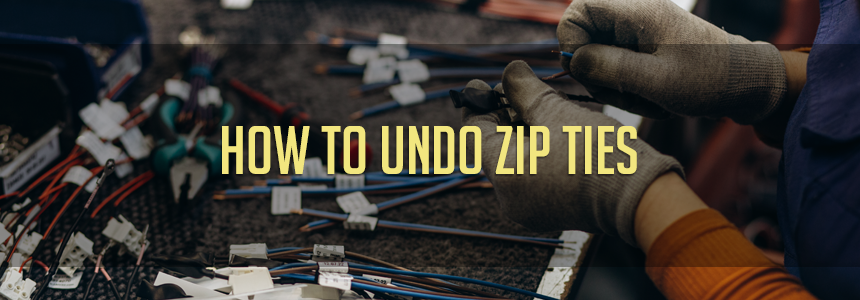In the fast-paced world of telecommunications, managing cables effectively is essential to ensure seamless connectivity, minimize downtime, and maintain overall network efficiency. Flexible cable management solutions like braided sleeving have become indispensable in organizing, protecting, and enhancing the longevity of cables in telecom infrastructures. This article explores the advantages of braided sleeving, its applications in telecommunications, and why it is a preferred solution for cable protection and management.
Understanding Braided Sleeving
Braided sleeving is a flexible and durable cable management solution made from interwoven strands of material, such as polyester, nylon, fiberglass, or polyethylene terephthalate (PET). These materials provide a high degree of flexibility while maintaining structural integrity, ensuring optimal cable protection in telecommunications applications.
Types of Braided Sleeving
There are several types of braided sleeving available, each designed for specific applications:
-
Expandable Braided Sleeving – Made from PET or nylon, this type expands to accommodate cables of different sizes and retracts to create a snug fit.
-
Self-Closing Braided Sleeving – Features a wrap-around design that allows for easy cable insertion and removal while providing excellent protection.
-
Metallic and Shielded Braided Sleeving – Designed for EMI (electromagnetic interference) and RFI (radio frequency interference) shielding, essential in high-frequency telecom environments.
-
Flame-Retardant Braided Sleeving – Made with materials that resist high temperatures and flames, ensuring safety in high-risk environments.
-
Heavy-Duty Braided Sleeving – Offers enhanced durability for industrial and outdoor telecommunications applications.
-
High Temperature and Plenum - In areas where low smoke and off gassing are required
The Benefits of Braided Sleeving in Telecommunications
1. Enhanced Cable Protection
Telecommunication cables are often subjected to physical stress, abrasion, and environmental hazards. Braided sleeving provides a protective layer that minimizes wear and tear, preventing costly cable replacements and maintenance.
-
Abrasion Resistance – Protects cables from damage caused by friction and movement.
-
Impact Protection – Absorbs shocks and mechanical stresses, extending cable lifespan.
-
Temperature Resistance – Some sleeving options can withstand extreme temperatures, making them ideal for outdoor telecom installations.
2. Improved Organization and Aesthetics
Telecom infrastructures require a systematic cable organizer to prevent tangling and reduce installation complexity. Braided sleeving helps bundle cables neatly, enhancing efficiency and visual appeal.
-
Reduces Cable Clutter – Keeps telecom racks and cabinets tidy and well-organized.
-
Facilitates Identification – Color-coded sleeving options make it easier to differentiate between cable groups.
-
Minimizes Tripping Hazards – Well-managed cables improve workplace safety.
3. Flexibility and Expandability
Unlike rigid conduits, braided sleeving offers superior flexibility, accommodating cable movement without compromising protection.
-
Easily Expands and Contracts – Suitable for different cable sizes and configurations.
-
Accommodates Complex Routing – Allows for dynamic movements in telecom applications.
-
Reusable and Adjustable – Can be modified and reused as needed.
4. EMI and RFI Protection
Electromagnetic and radio frequency interference can significantly impact telecom performance. Metallic and shielded braided sleeving prevents signal disruption by reducing external interference.
-
Ensures Signal Integrity – Reduces signal loss and data corruption.
-
Enhances Network Performance – Essential for maintaining high-speed communication.
-
Meets Industry Standards – Designed to comply with telecom EMI/RFI shielding regulations.
5. Fire and Heat Resistance
Safety is a critical concern in telecommunications, especially in high-voltage and high-temperature environments. Flame-retardant braided sleeving helps prevent fire hazards.
-
Resists High Temperatures – Protects cables in hot environments, including server rooms and industrial telecom setups.
-
Meets Fire Safety Regulations – Conforms to UL94 and other industry standards.
-
Minimizes Fire Spread – Reduces the risk of fire propagation in densely packed telecom installations.
Applications of Braided Sleeving in Telecommunications
1. Data Centers
Data centers house extensive network infrastructures where cable management is critical. Braided sleeving helps organize fiber optic and Ethernet cables, reducing maintenance efforts and ensuring efficient airflow.
-
Prevents Overheating – Promotes better air circulation around cables.
-
Reduces Downtime – Simplifies troubleshooting and cable replacement.
-
Supports High-Density Cabling – Enhances efficiency in large-scale data centers.
2. Cell Towers and Outdoor Telecom Installations
Outdoor telecom installations, such as cellular towers and broadband networks, require durable cable protection against harsh environmental conditions.
-
UV-Resistant Materials – Protects against sun damage and weathering.
-
Water and Moisture Resistance – Prevents cable deterioration in humid environments.
-
Vibration Dampening – Reduces mechanical strain from wind and movement.
3. Broadcast and Media Networks
Television and radio stations use braided sleeving to manage complex cabling setups, ensuring uninterrupted transmission and high-quality audio-visual signals.
-
Reduces Signal Noise – Prevents audio and video distortion.
-
Enhances Cable Lifespan – Protects high-end broadcasting equipment.
-
Organizes Multi-Cable Runs – Keeps production studios clutter-free.
4. Military and Aerospace Telecommunications
Military and aerospace communication systems require robust cable management solutions to withstand extreme conditions.
-
High-Impact Resistance – Suitable for rugged environments.
-
Lightweight and Durable – Maintains performance in aerospace applications.
-
Meets Military Specifications – Complies with stringent MIL-STD standards.
5. Enterprise and Commercial Buildings
Large office buildings and business hubs rely on structured cabling systems to support internet, telephony, and networking solutions.
-
Enhances Office Aesthetics – Keeps workspaces neat and professional.
-
Facilitates Maintenance – Enables quick cable identification and repairs.
-
Supports Future Scalability – Allows for easy network upgrades and expansions.
How to Choose the Right Braided Sleeving for Telecom Applications
1. Consider Cable Type and Diameter
Different cables have unique sizing requirements. Expandable braided sleeving offers versatility, accommodating varying diameters while ensuring a secure fit.
2. Evaluate Environmental Factors
Select sleeving materials based on the installation environment:
-
Outdoor Applications – UV-resistant, waterproof, and heavy-duty sleeving.
-
Indoor Applications – Lightweight, flexible, and fire-resistant sleeving.
-
High-Temperature Areas – Heat-resistant or flame-retardant materials.
3. Assess EMI/RFI Shielding Needs
If operating in an environment with significant electromagnetic interference, opt for shielded braided sleeving to maintain optimal signal integrity.
4. Choose the Right Closure Style
-
Expandable Sleeving – Best for large cable bundles and flexibility.
-
Self-Closing Sleeving – Ideal for applications requiring frequent cable access.
-
Split Braided Sleeving – Simplifies retrofitting existing installations.
Conclusion
Braided sleeving is an essential component in flexible cable management for telecommunications. Its ability to protect, organize, and enhance cable performance makes it an ideal choice for data centers, broadcast networks, military installations, and enterprise communications. By selecting the right braided sleeving solution, telecom professionals can optimize cable durability, reduce downtime, and maintain a high-performance network infrastructure.
Explore our range of high-quality braided sleeving solutions.
Flexible Cable Management: Benefits of Braided Sleeving in Telecommunications














